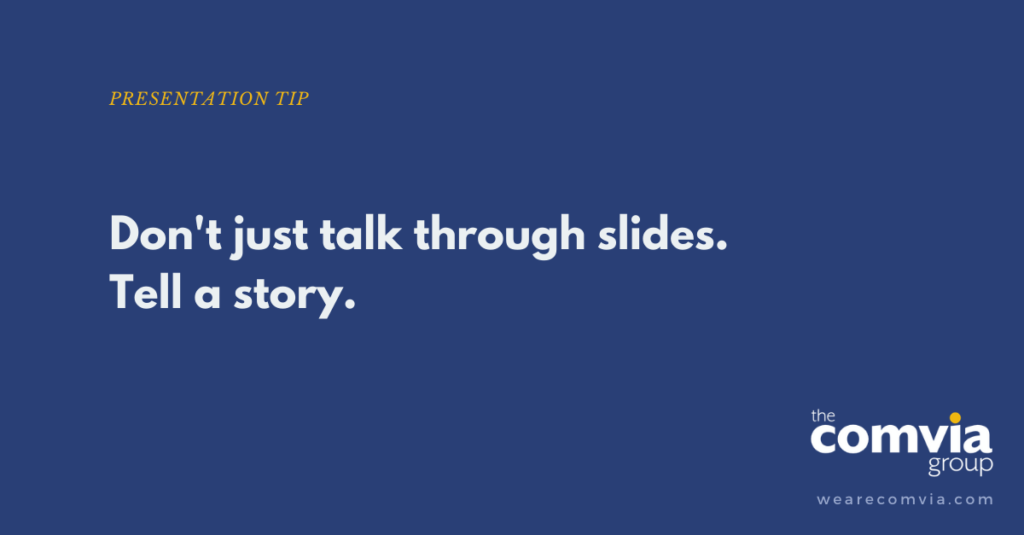When I give workshops on creating compelling and persuasive presentations, the first thing I talk about is how important it is to plan the story you intend to tell.
Like most professionals, you probably jump right into PowerPoint and start putting together slides before you really consider the story those slides are trying to tell. If you can prevent yourself from getting lost in the slides (and losing your main message), that’s fine. But many people can’t. That’s why you see so many overloaded slides and people using PowerPoint as a script rather than as a visual aid that supports their delivery. For this reason, I often recommend creating an outline outside of PowerPoint first.
But you know what? Some people (like me) are actually fairly efficient at using PowerPoint to put a first draft of a presentation together. I use it as a storyboard. However, the first few versions of that storyboard are never what ends up being the slides that I use to present. Those slides are crafted later, when I’m clear on my storyline, key messages, and goals of my presentation. After all, I’m presenting because I want my audience to think, feel, or do something. If I lose site of that goal, then the point of my story is moot.
Whatever method you use to map out your presentation and develop your slides, first think about the story you need to tell. Then, when you think you’re done preparing and rehearsing your presentation, shut down PowerPoint and tell the story without your slides to someone else — as if you were sitting with them over coffee or a glass of wine.
If you can’t tell them the story without your slides, then you’re not ready.

